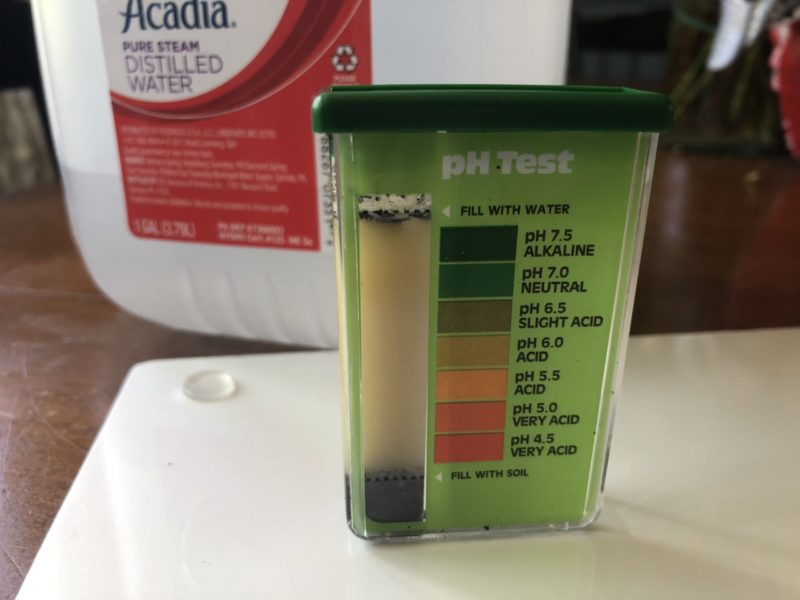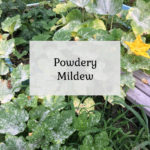---------------------------------------------------------
Testing your garden soil is an important step to having a successful garden each year. Unfortunately, it is a step that many gardeners skip out on. Let me show you how easy, fast, and inexpensive testing your soil health can be to help you get your best garden ever!
The ideal time to test your soil is in the spring, preferably about a month before you plan on planting. It is also a good idea to test your soil again in the fall after your growing season has ended. It is best to correct soil imbalances in small changes to avoid over correcting a problem. Testing in the fall gives you the entire winter to work on building your soil health to get next year’s garden off to a great start!

What should you test soil for?
There are four main things you want to test your soil for: pH level, nitrogen (n), phosphorus (p) & potash (k). These elements make up the main nutrients & building blocks for healthy soil. They are easy to test for at right at home. For more tips on gardening mistakes click here!
pH level
Determining the pH level of your soil (how acidic or alkaline it is) is probably the most important test you can perform. pH runs on a scale of 0-14, with 0 being extremely acidic and 14 being extremely alkaline. All plants have a preference so knowing the soil pH can help you choose suitable plants for your soil (or amend your soil to suit the plants you would like).
Soil with a pH below 7 is acidic and sometimes called “sour”. Soil with a pH above 7 is alkaline and sometimes called “sweet”. In general, most garden veggies like a neutral to slightly acidic soil with a pH between 6.2 – 7.2.
Some garden plants that enjoy more acidic soil include apples, blueberries, raspberries, and potatoes. Veggies that can tolerate more alkaline soil include tomatoes, garlic, cauliflower and corn. Giving plants the proper pH helps them take in the nutrients they need to grow strong.
Nitrogen (N)
Nitrogen helps plants produce healthy leaves. A nitrogen deficient plant will have yellowing leaves, stunted growth, and low fruiting yields. Too much nitrogen can cause the plant to focus only on producing leaves and not on producing flowers (vegetables). The fruit or vegetable it does produce will be small.
Phosphorus (P)
Phosphorous plays a big part of plant genetics and developing healthy seeds. It will increase fruit development, increase vitamin content, and help the plant’s disease resistance. A deficiency will cause stunned growth and sterile seeds.
Potash (K)
Potash (potassium) helps grow super strong plants, promotes protein synthesis, and cold hardiness. Fruits & vegetables will have improved color, texture, and flavor. Deficient plants have stunted growth, poor roots, and spotted, curled leaves.
Other nutrients
There are other micro-nutrients that also contribute to healthy soil for a larger harvest and contribute to disease resistance. Testing for these require more advanced equipment. You can contact your local extension service or professional garden center for a full soil panel test.

How to test your soil
To collect your soil sample, dig about 5 inches down in several places in the garden. Collect about a cup of soil total from the holes and mix it all together to get a good cross section of the garden. It’s best to collect from dry soil so the rainwater won’t skew the results.
Testing for pH is something you can do easily using things you likely already have in your kitchen. Take 2 tablespoons of soil and put in a cup. Add 1/2 cup of vinegar. If it starts to fizz and bubble, you have alkaline soil. In a separate container put another 2 tablespoons of soil and add enough distilled water to make it muddy. Add 1/2 cup of baking soda. If it starts to fizz and bubble, you have acidic soil. If neither sample reacts, then your soil is neutral!
You can also purchase garden soil test kits inexpensively either online at your garden center. Kits will come with testers & vials to test your soil for pH, nitrogen, phosphorus & potash all from home without having to send away and wait for results.
Follow the instructions for the kit that you purchased. The one I use is Rapitest. The starter kit is around $15 for 10 full rounds of tests. From there you can order refills. Soil collection is similar to at home pH test, dig a few holes in your garden to collect samples. You mix the soil with a little distilled water and the activator powder for each test, then compare the results to discover how to best amend your soil.

Fixing your soil
Fixing pH issues in your soil
Organic compost is a great way to balance your soil pH and bring it to a neutral. Lime can be used to make soil less acidic, and sulfur can be used to make soil less alkaline. I have found the best way to keep your soil pH balanced is to add new compost every fall to replenish nutrients lost over the growing season.
Fixing nitrogen, phosphorus, potash imbalances in your soil
Commercially available garden fertilizer generally has three numbers listed on the bag, for example 10-10-10 fertilizer. These numbers refer to the percentages of nitrogen, phosphorus & potash. So a 10-10-10 fertilizer has 10% nitrogen, 10% phosphorus, and 10% potash. This would be a good all around fertilizer for veggies.
Knowing your soil quality is important when choosing a fertilizer. If you discover your soil is deficient in just phosphorus, you can choose bone meal fertilizer which usually has a NPK of 3-15-0 – so lots of phosphorus but no potash and a little bit of nitrogen.
The results of my soil test this spring showed that I was not deficient in anything, but my soil did have too much nitrogen. This is likely a result of too much chicken manure in my compost and not enough green matter. Correcting deficiencies is easy, you just have to add some more fertilizer. Correcting surpluses is a little harder.
There are a couple of things I will do to reduce the nitrogen in my garden. Planting heavy nitrogen feeding plants like corn, broccoli, & squash can help use up the nitrogen (and they will love the extra nitrogen in the soil!). Spreading wood mulch in the garden can also help absorb excess nitrogen.








Frank
Wednesday 28th of July 2021
Absolutely brilliant for bringing this article. Now I know how to test the soil first. By sharing this article, you help a lot of gardeners to learn proper ways of gardening. Thank you for sharing this one.
Trish
Sunday 20th of September 2020
I just came across your website and wanted to thank you for such clean and informative info. It’s hard as a beginning gardener to sift through all of the blogs and you tube videos to find actual practical information. So I appreciate your posts even more!
Liz
Sunday 20th of September 2020
I'm glad I could help! :)